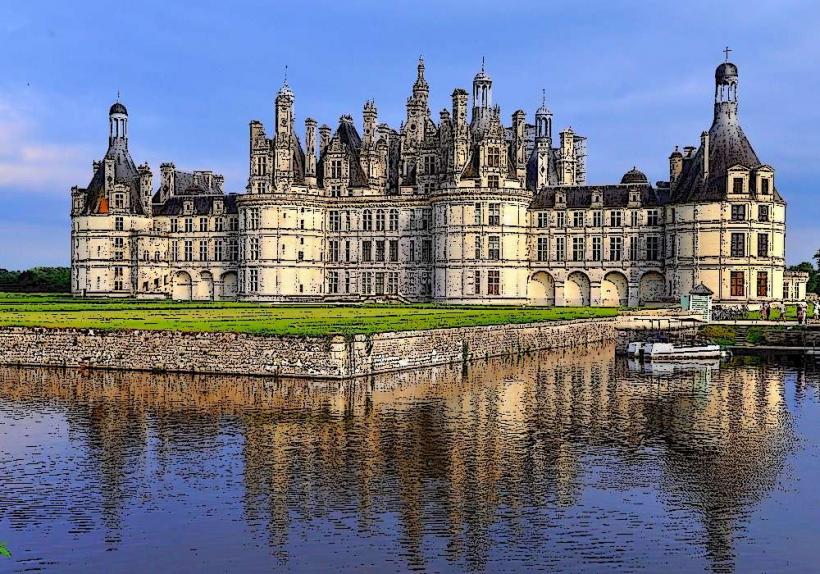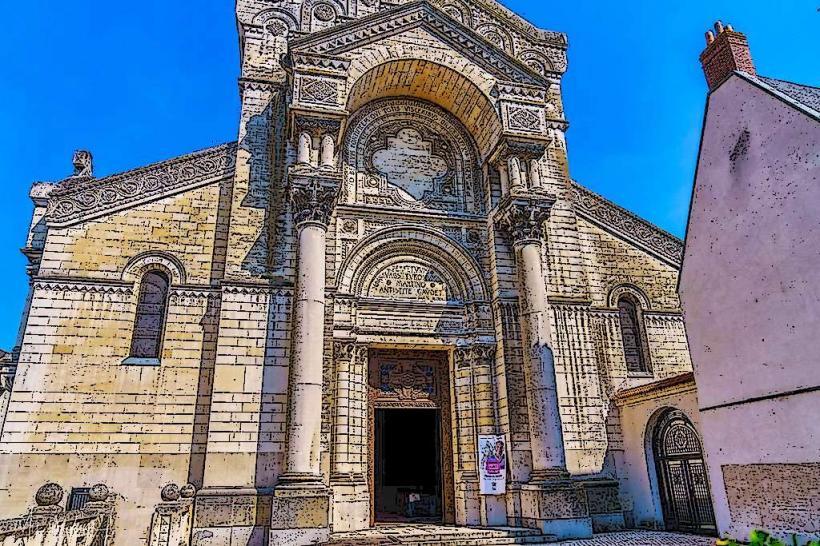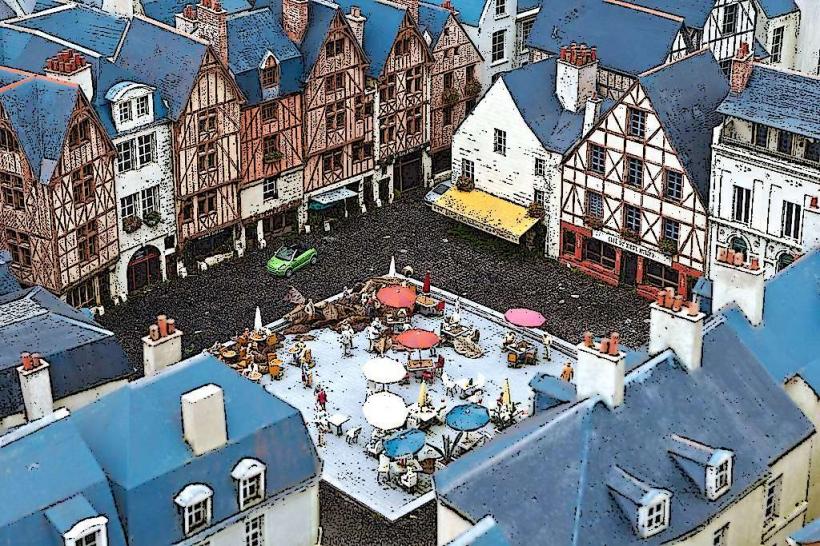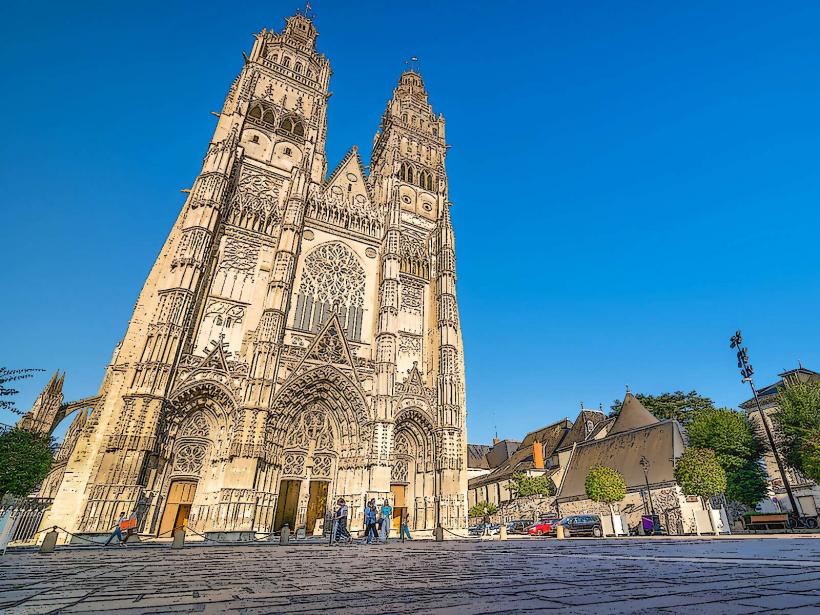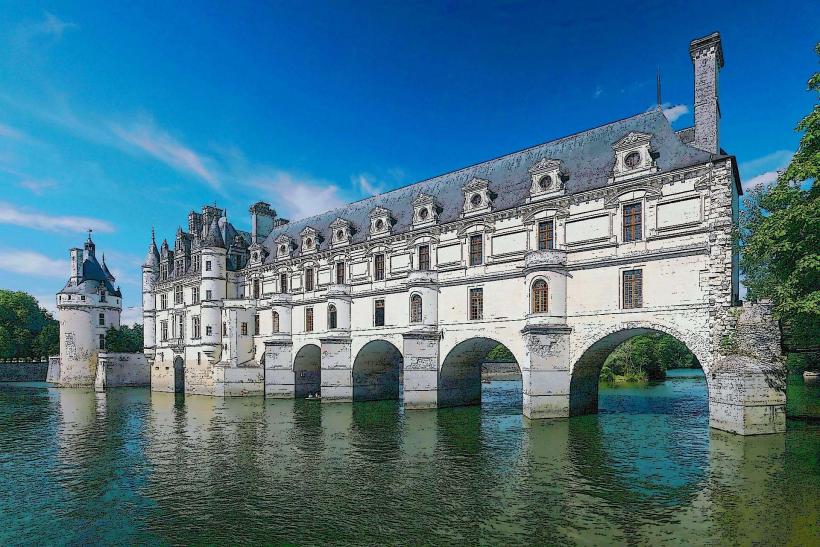Information
Landmark: Chateau de BloisCity: Tours
Country: France
Continent: Europe
Château de Blois
The Château de Blois is one of the most historic and visually captivating castles in the Loire Valley of France. It served as a royal residence for several French kings and queens and is notable for its rich architectural diversity and its role in French history. Located in the town of Blois, the château is a perfect example of Renaissance and medieval architecture, offering visitors a glimpse into the opulent lives of French royalty and the political history of the era.
Overview and History
Location: The Château de Blois is situated in the town of Blois, in the Loir-et-Cher department of the Loire Valley, about 180 kilometers (112 miles) south of Paris. It overlooks the Loire River and provides panoramic views of the surrounding region.
Historical Background:
- The château’s history dates back to the 9th century, but it became a prominent royal residence during the Renaissance period under King Louis XII and his successors.
- Louis XII was the first monarch to significantly expand and renovate the castle, making it one of the most important royal residences in France during the early 16th century.
- François I also contributed to the château’s expansion, adding the grand Francis I Wing, a masterpiece of Renaissance architecture, and making it a cultural hub of the French court.
- The château was the scene of significant events, including royal intrigues and political dramas. For example, it was here that the famous assassination of the Duke of Guise took place in 1588, an event that marked a turning point in the French Wars of Religion.
Architectural Significance:
- The Château de Blois is remarkable for its architectural diversity, with buildings from various periods, including Medieval, Renaissance, and Classical styles.
- The château features four wings, each representing a different architectural period:
- Medieval Wing: The oldest part of the château, dating back to the 13th century and featuring a medieval fortress-style architecture.
- Louis XII Wing: A Renaissance-style addition that was constructed during the reign of Louis XII. It is a prime example of early Renaissance design in France, with ornate windows and a grand staircase.
- Francis I Wing: Built under François I, this wing exemplifies Renaissance architecture. It features a striking spiral staircase that spirals up through a large tower and is a notable feature of the château.
- Classical Wing: Added later in the 17th century, this wing reflects the more Classical architectural style that emerged in France during the reign of Louis XIV.
Key Features of the Château de Blois
The Grand Staircase:
- One of the most iconic elements of the Château de Blois is its grand spiral staircase, located in the Francis I Wing. This beautifully crafted staircase is a standout feature of Renaissance architecture and served as the focal point of the château.
- The staircase is renowned for its elegant design, with intricate carvings and a flowing spiral that leads up through several levels of the château, providing access to the main rooms.
The Louis XII Wing:
- The Louis XII Wing features classic Renaissance elements, with ornate facades, large windows, and a central courtyard. The wing houses several important rooms, including royal chambers and the Hall of the Guards.
- One of the most significant elements of this wing is the Royal Chapel, which is richly decorated and provides a glimpse into the spiritual life of the French court.
The Francis I Wing:
- The Francis I Wing is a hallmark of Renaissance architecture in France. The spiral staircase here is a highlight, and the design of the wing reflects the Italian Renaissance influence on French architecture at the time.
- This wing contains several impressive rooms, including the king's apartments and a large hall used for court gatherings.
Royal Apartments:
- The château houses several royal apartments that have been preserved to give visitors a sense of the opulence of the French monarchy. These rooms are decorated with tapestries, furniture, and artworks from the Renaissance period, reflecting the tastes and grandeur of the time.
The Gardens:
- The château is surrounded by beautifully landscaped gardens, which have been designed in the French formal garden style. These gardens are divided into distinct sections, including flower beds, fountains, and vegetable plots.
- Visitors can explore the gardens and enjoy the peaceful surroundings, with scenic views of the Loire River in the distance.
The Château's Museum:
- Today, the Château de Blois also functions as a museum, with exhibitions that showcase the château’s rich history and the lives of the royal family members who lived there. The museum displays a variety of historical objects, including furniture, paintings, and decorative arts from the Renaissance period.
- Special exhibits often focus on the château's role in French history, as well as the key figures who shaped its destiny, including Louis XII, François I, and Catherine de' Medici.
The History of the Assassination of the Duke of Guise:
- A pivotal event in French history occurred at the château in 1588 when Henri III, King of France, ordered the assassination of the Duke of Guise during a political and religious power struggle. This incident marked a major turning point in the Wars of Religion and led to further conflict between the Catholic and Protestant factions in France.
Visitor Experience
Opening Hours: The Château de Blois is open year-round, with varying hours depending on the season. It is typically open daily, and it is advisable to check the official website for up-to-date information.
Ticket Options: Several ticket options are available, including standard admission, group tours, and audio guides. Visitors can explore the château’s different wings at their own pace or opt for a guided tour to learn more about its history and significance.
Events and Exhibitions: The château regularly hosts temporary exhibitions on various aspects of French history and art, particularly focused on the Renaissance period. It also holds cultural events such as concerts and performances throughout the year.
Accessibility: The château is accessible for visitors with disabilities, with ramps and elevators available to help navigate different levels.
Nearby Attractions
- Château de Cheverny: A nearby Renaissance castle, known for its well-preserved interiors and vast grounds.
- Château de Chambord: One of the most famous castles in the Loire Valley, known for its grand architecture and the Leonardo da Vinci staircase.
- Loire Valley Vineyards: The region is famous for its wine, and visitors can explore nearby vineyards to sample local wines.
Conclusion
The Château de Blois is a must-see for history buffs, architecture enthusiasts, and anyone interested in exploring the heritage of the Loire Valley. With its stunning blend of medieval and Renaissance architecture, its significant historical role in the French monarchy, and its beautifully preserved interiors and gardens, it provides an immersive experience into the grandeur of French royal life. Whether you are fascinated by the historical events that took place within its walls or simply captivated by its architectural beauty, the Château de Blois is a must-visit landmark in the Loire Valley.

